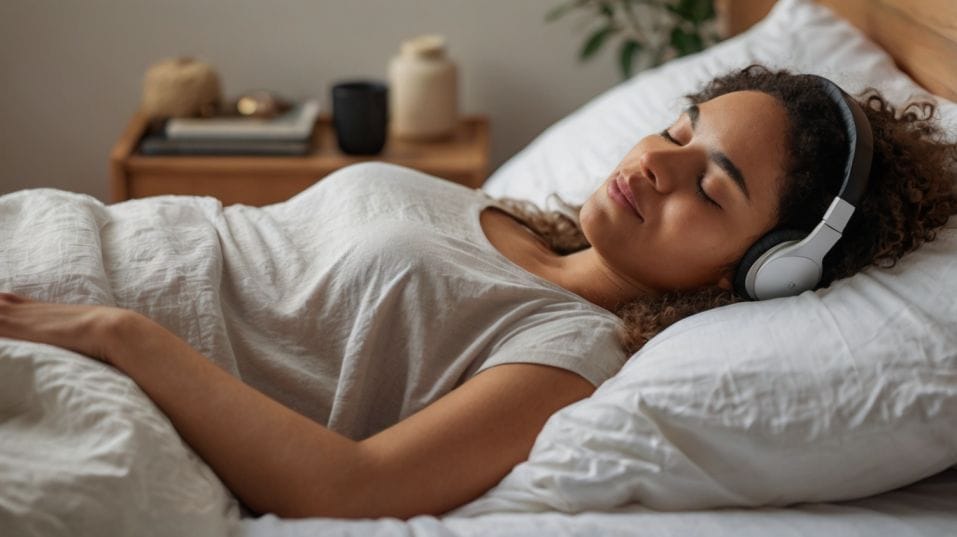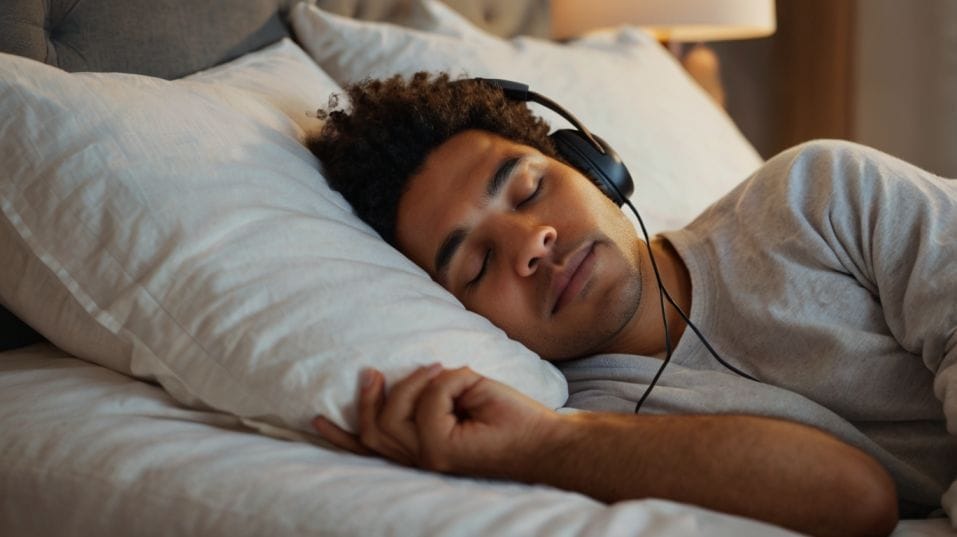How to Use Guided Meditation for Better Sleep
Struggling with sleep? Discover how guided meditation helps you fall asleep faster, sleep longer, and wake up refreshed with mindful techniques.

Do you ever crawl into bed exhausted, only to find your mind wide awake? Work stress, lingering to-do lists, and an overactive brain make it hard to unwind.
Instead of reaching for sleep aids, guided meditation offers a science-backed way to shift from tension to tranquility. By training your brain to associate bedtime with relaxation, you can ease into deep, uninterrupted sleep.
Ready to quiet the mental noise and wake up refreshed? Let’s explore how guided meditation can transform your nights.
How Guided Meditation Supports Sleep
Guided meditation helps shift the body from alertness to relaxation by using breathwork, visualization, and mindfulness techniques.
Studies show that it lowers cortisol, slows heart rate, and reduces mental chatter—all essential for quality sleep.
When practiced consistently, guided meditation strengthens neural pathways that promote relaxation, making it easier to fall asleep and wake up feeling refreshed.
The key mechanisms that make guided meditation effective for sleep include:
- Activation of the parasympathetic nervous system: Meditation signals the body to switch from fight-or-flight mode to a state of rest and recovery.
- Regulation of stress hormones: Cortisol and adrenaline, which fuel anxiety and alertness, decrease, while melatonin production increases, promoting drowsiness.

- Reduced overactive thinking: Meditation teaches the brain to disengage from worries and mental noise that often keep people awake.
- Increased sleep efficiency: Research shows that mindfulness meditation enhances sleep duration and depth by helping individuals enter slow-wave sleep more quickly.
Techniques for Guided Meditation at Bedtime
Different meditation techniques serve distinct purposes when it comes to sleep. Experimenting with various approaches can help identify what works best for your needs.
Progressive Muscle Relaxation (PMR)
PMR systematically relaxes the body by tensing and releasing each muscle group, relieving physical tension and priming the body for sleep.
- Begin with your feet and work your way up, tensing each muscle for a few seconds before releasing it completely.
- As you let go, notice the contrast between tension and relaxation, reinforcing a sense of calm.
- Sync deep breathing with muscle release to enhance the relaxation effect.
Body Scan Meditation
This technique enhances awareness of bodily sensations and tension points, allowing for gradual relaxation.
- Start at the crown of your head and slowly scan down to your toes, mentally noting areas of tightness.
- Instead of forcing relaxation, simply acknowledge any tension and let it soften naturally.
- Use slow, deep breathing to enhance the feeling of calmness and release.
Breath-Focused Meditation
Regulating the breath naturally soothes the nervous system, slowing down the heart rate and quieting mental chatter.
- Try the 4-7-8 breathing technique: Inhale for four seconds, hold for seven, and exhale for eight.
- If the mind wanders, gently bring your focus back to the rhythm of your breath.
- Repeat for several minutes, allowing the body to sink into a state of deep relaxation.
Visualization Meditation
Guided imagery provides a mental escape from stress, shifting the mind toward peaceful and calming thoughts.
- Picture yourself in a serene environment, such as a quiet beach, lush forest, or cozy cabin.
- Engage all your senses: hear the waves, feel the warm sunlight, or smell the fresh air.
- Immerse yourself fully in the visualization, allowing it to lull you into a state of deep relaxation.
Loving-Kindness Meditation
Emotional tension can interfere with sleep, especially after a stressful day. Loving-kindness meditation helps foster feelings of compassion and peace before bed.
- Silently repeat affirmations like: May I be calm. May I be at peace. May I rest easily.
- Extend these sentiments to others, including loved ones, coworkers, or even strangers.
- Letting go of resentment and cultivating gratitude promotes emotional relaxation, making sleep more restful.
Creating a Mindful Sleep Routine
Guided meditation is most effective when paired with a mindful bedtime routine that signals the body to wind down.
- Set a consistent bedtime: Sticking to a schedule helps regulate the circadian rhythm, making it easier to fall asleep naturally.
- Dim the lights an hour before bed: Reducing light exposure boosts melatonin production, supporting the body's natural sleep cycle.
- Avoid screens before bedtime: The blue light from devices suppresses melatonin, making it harder to fall asleep. Opt for a book or guided audio meditation instead.
- Engage in gentle movement: Yoga or light stretching helps release built-up tension, preparing the body for rest.
- Use aromatherapy: Scents like lavender and chamomile have calming effects, making them excellent additions to a bedtime routine.
- Create a sleep-friendly environment: A cool, dark, and quiet bedroom enhances sleep quality. Consider blackout curtains, white noise machines, or comfortable bedding.
Recommended Guided Meditation Resources
Plenty of free and paid options can help you get started:
- Apps: Calm, Headspace, Insight Timer
- YouTube Channels: The Honest Guys, Michael Sealey, Jason Stephenson
- Podcasts: Sleepy, Nothing Much Happens, Sleep Meditation Podcast
- Books: Why We Sleep by Matthew Walker, The Sleep Revolution by Arianna Huffington
For a truly immersive experience, consider trying binaural beats or soundscapes designed to enhance relaxation and support deep sleep.
Final Thoughts
Guided meditation is a simple yet powerful way to reset your mind and body for restful sleep.
By incorporating techniques like progressive muscle relaxation, breath-focused meditation, and visualization, you can quiet mental noise and create the ideal conditions for deep rest.
Start tonight—choose a meditation that resonates with you, create a calming bedtime ritual, and give your mind the break it deserves.
Sleep isn’t a luxury; it’s a necessity. Make it a priority, and let guided meditation be your pathway to better rest.




